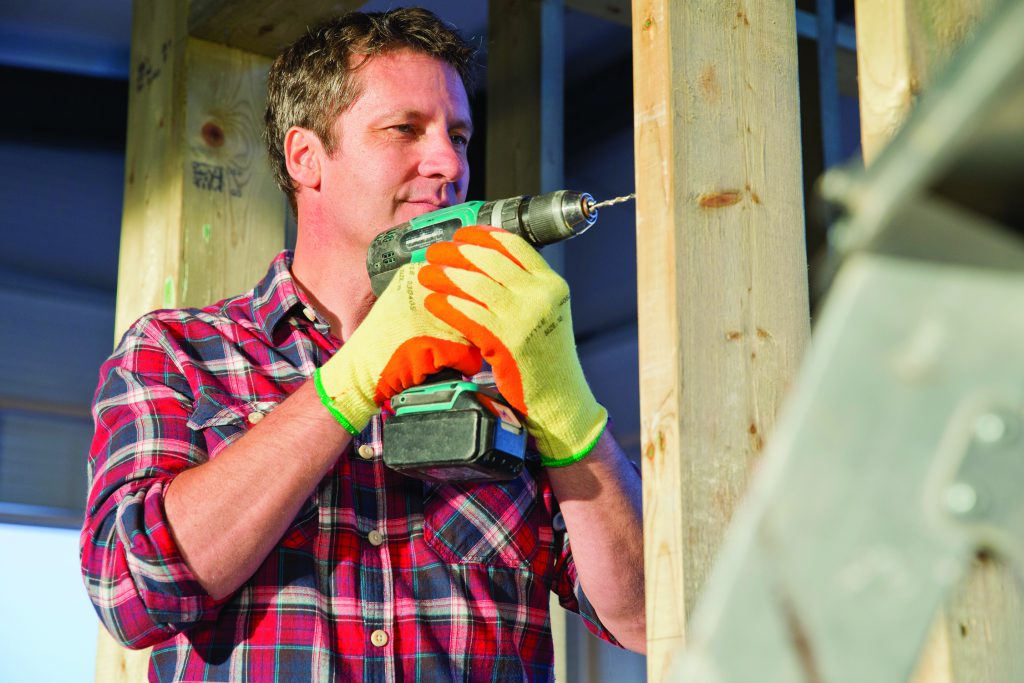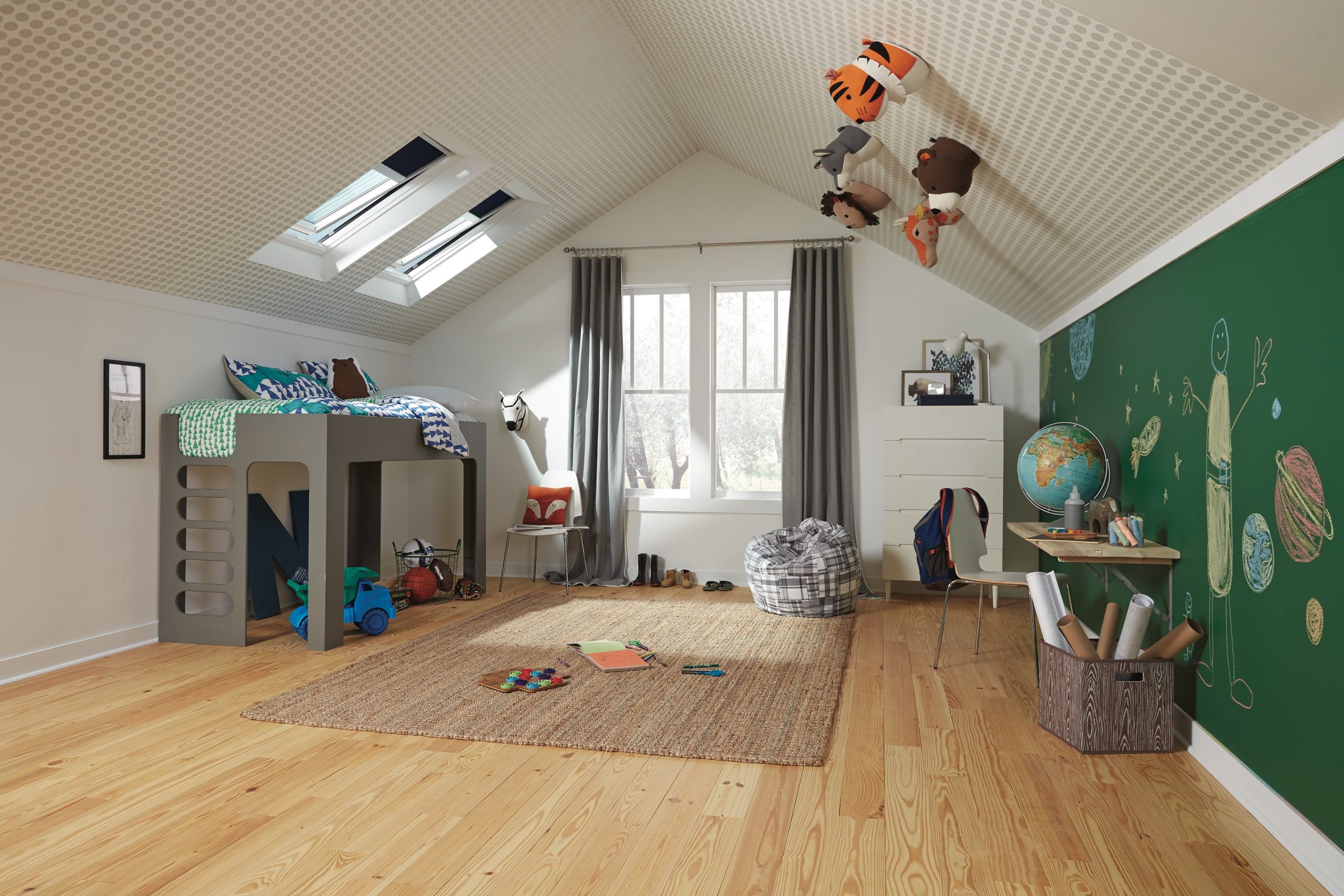More efficient, tightly built homes than those constructed in previous generations are generally well-regarded, for the most part with good reason. However, when you consider people spend 90 percent of their time indoors on average, according to the Environmental Protection Agency (EPA), such airtight environments raise some concerns.
All that efficiency cuts down on airflow, effectively trapping allergens and toxins inside. According to estimates from the EPA, the air inside the average home may be as much as five times more polluted than the air outdoors, even in a bustling city.
“We know instinctively that spending so many hours in stuffy places isn’t good for us,” said Peter Foldbjerg, head of daylight energy and indoor climate at Velux. “According to research, living in damp and moldy homes increases our risk of asthma by 40 percent and leaves us vulnerable to developing other ailments.”
Limited fresh air and light during the day can negatively impact mood, sleep and performance. Air pollution can also pose a health risk through irritation to the eyes, nose and throat; headaches, dizziness and fatigue; and respiratory conditions, heart disease and cancer. To help alleviate some of these concerns, consider these tips. Bring the outside in even when the weather turns cooler!
Even a small step like adding some potted plants, which are known to purify air, can improve your indoor environment. In addition, think of how you could create a better view to the outside through smart use of windows and doors that bring in fresh air and daylight.
Rely on natural air flow
Open your windows 3-4 times a day, at least 10 minutes at a time in the fall, to allow fresh air in. To complement natural light and fresh air from vertical windows, consider adding skylights to rooms you use most often. Skylights that can be opened, such as those offered by Velux, contribute to greater indoor comfort and ventilation by removing excess heat, moisture, odors and other indoor pollutants. They can also help reduce the need for air-conditioning due to the chimney effect, which occurs when skylights and vertical windows are both opened, allowing warm, stale air to rise and escape through the roof, replaced by fresh air drawn in through traditional windows.
Eliminate potential obstacles
Avoid blocking fresh air with drapes, blinds and other hindrances, like heavy furniture placed too close to windows. Also consider other aspects of your home that could be thwarting your efforts to improve air circulation and quality, such as dust, dirt and mold. Regular and thorough cleaning can help keep those irritants at bay and make your quest for cleaner air easier. Find more tips for creating a healthier home at veluxusa.com/indoorgeneration.
Creating Cleaner Indoor Air
Creating more airflow is an important step to improving your indoor environment, but considerations like air quality should not be overlooked. More air is a good thing, but more clean air is better yet. Everyday home life activities such as cooking, showering, lighting scented candles, sleeping and doing laundry can all contribute to polluted indoor air, which over time can lead to the development of illnesses. These tips from the indoor climate experts can help make the air inside your home healthier:
1. Keep bathroom doors closed and turn on the extractor fan or open a window or skylight when showering.
2. Turn the hood fan on when cooking and open your windows, if weather permits.
3. Avoid burning candles excessively; look for alternatives such as sprigs of lavender to add a natural fresh scent.
4. Dry clothes outside when possible, which reduces carbon emissions from the dryer and minimizes potential pollutants traveling through the dryer vent. Clothes lines are making a come back for good reason and that is a great way to bring the outdoors in.
5. Clean regularly with non-chemical based cleaning products, and pay attention to ingredients in cleaning products that you buy, some may create hazardous fumes.
Increasing Natural Light
Sunlight is a natural antidepressant, and there is ample scientific evidence that associates daylight with better health and quality of life, such as improved mood, less fatigue and reduced eye strain. If your home needs some brightening up, consider these home features with natural light in mind:
Paint
Choosing a lighter-colored paint and avoiding statement wallpaper or large blocks of color can naturally make a space feel brighter and reflect any natural light entering the room. Think soft shades of off-white or subdued, neutral hues.
Flooring
Wooden, ceramic or stone floors with a polished finish typically reflect light to help brighten spaces. If you prefer carpet, consider light, neutral colors to help make the space feel brighter.
Skylights
Adding skylights is a relatively low-cost, high-impact home improvement that can enhance home decor and deliver energy-saving benefits, as well. Fresh air skylights, like those from Velux, can help reduce dependence on artificial lighting and mechanical ventilation, which helps save money on electric bills. Convenience features like remote control operation make it easy to manage air flow and natural lighting with the touch of a button.
Mirrors
Adding furniture and accessories with reflective surfaces can help diffuse light and add stylish touches throughout the home. Metallic, glass and mirrored accessories, or even mirrors themselves, can spread light throughout your home.
Lighting
Go easy on artificial lighting, and instead work to optimize natural light sources. Consider supplementing areas where natural light doesn’t reach such as corners and corridors with small lamps, and install dimmer switches that can easily be adjusted depending on the amount of natural light flowing into your home.
8 tips for safer power tool performance
 For many homeowners, a list of seasonal chores and home improvement projects can add up to a whole lot of work, especially when preparing for the change from Fall to Winter. Power tools often get called on for heavy use to whittle away at that to-do list, but the batteries used to power these devices can pose certain risks. Care should be taken on the upkeep and usage as well as your to-do tasks.
For many homeowners, a list of seasonal chores and home improvement projects can add up to a whole lot of work, especially when preparing for the change from Fall to Winter. Power tools often get called on for heavy use to whittle away at that to-do list, but the batteries used to power these devices can pose certain risks. Care should be taken on the upkeep and usage as well as your to-do tasks.
Lithium-ion batteries have become quite common due to their efficiency, energy storage capacity, durability and safety. These batteries’ higher energy potential in a smaller battery makes them ideal for cordless power tools, but higher energy density also means higher potential for damage when misused.
While they offer great versatility and portability, batteries also need to be handled properly to prevent potential dangers. Safe, proper use of lithium-ion batteries from the original tool manufacturer is key to preventing battery-related accidents.
Before operating a battery-powered tool, heed this advice from the experts at the Power Tool Institute, a leading voice on power tool safety issues and standards for the industry.
1. Know that batteries are not interchangeable. It’s important to only use batteries and chargers from the original power tool manufacturer. Original manufacturer batteries are specifically engineered and tested for use with the tools and chargers from the original manufacturer.
2. Aftermarket batteries may not be tested to the same standards as original manufacturer batteries and therefore come with additional hazards that can result in fire, property damage or personal injury.
3. Always transport and store lithium-ion batteries as instructed in the owner’s manual.
4. Avoid contact with metal objects, such as keys, coins, screws and nails, and liquids, which present safety hazards. Inspect batteries regularly for signs of damage, such as crushing, cuts or punctures. Do not use a battery that has received a sharp blow, been dropped or is damaged.
5. Never modify, disassemble or tamper with a battery. The performance of damaged or modified batteries can be unpredictable and dangerous.
6. Be mindful of abnormal battery behaviors such as failure to fully charge or hold a charge, longer-than-usual charging times, overheating, a noticeable drop in performance, unusual LED activity when placed on a charger, liquid leakage from the battery or melted plastic anywhere on the pack. These are indications of an internal problem.
7. Do not immerse the battery or allow any fluids to flow inside. Conductive liquid ingress, such as water, can cause damage resulting in fire or explosion. Store your battery in a cool, dry place, away from combustible and flammable items.
8. When disposing of a lithium-ion battery, never throw it into the trash or a municipal recycling bin, as it can become a fire hazard. Instead, take it to a local recycling center or place it in a receptacle specifically designed for recycling batteries. If your lithium-ion battery is damaged, contact the manufacturer. Remember to store tools carefully as well where you can find and use for many seasonal changes to come. Tools are not toys and this is the time to explain to you children as well. For more information on safe battery use, storage and disposal for power tools, visit TakeChargeOfYourBattery.com, or find more tips for safe and proper operation of your power tools at PowerToolInstitute.com.





